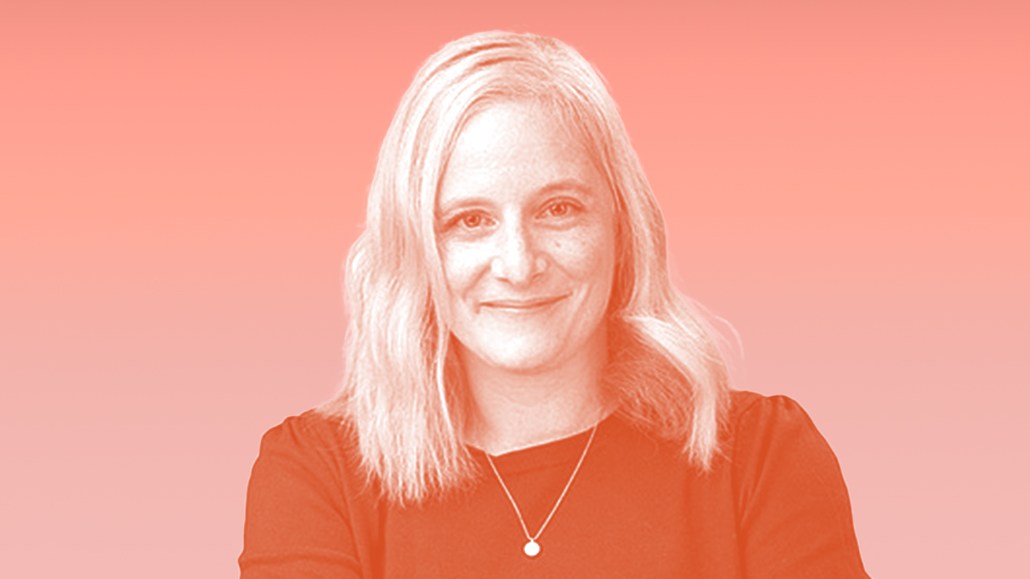Digitas’ media chief Megan Jones on adapting to the speed of AI and social trends

Speed is of the essence for modern agencies in a world where AI and social trends move faster than ever.
Digitas recently repositioned itself as a networked experience agency, with one driving insight being the understanding that consumers are “operating in a networked fashion,” said Megan Jones, chief media officer at Publicis-owned Digitas. It’s about understanding people’s behavior as they move through different experiences and content touch points in the customer journey — which is a lot more complex than it used to be. And from there, guiding clients to find the right customers along the way.
Jones used one of the most ubiquitous digital platforms as an example of that changed customer journey. “Think about the time they spend with Amazon, right?” she said. “You shop on Amazon, you watch content on Amazon. Amazon knows everything about you now. Amazon’s in the pharmacy business. … It’s a fluid funnel. It’s people moving in every which direction at any given moment.”
Two innovations are helping Digitas connect the dots and move more quickly: launching a generative artificial intelligence suite of tools in April, as well as a new social strategy unit last December. The latter — called Share Worthy and Trending, or SWAT — is a dedicated team of social natives and strategists that Jones said focuses on tapping into various platforms and trends around them.
“It’s that combination of the two things happening together,” Jones said. “It’s a team of folks who are able to assess what’s happening, identify what matters most and then creators who actually can make the assets that are purpose-built for those specific platforms and publish them.”
Meanwhile, with Digitas AI, the agency is testing AI products for both internal and external client use cases — like using AI to synthesize audience data or creating an “agent” that can adopt a brand’s voice, tone and personality.
Jones started her current role at Digitas in January 2023 — after working her way up the media ranks at the company for 12 years following stints at MEC, MPG and Arnold. Part of Digitas’ executive team now, Jones shared her thoughts on AI’s changes over the years, using data to bridge media and creative, and the need to move faster on cultural trends.
This interview has been edited and condensed for clarity.
How has your role evolved here?
I was very deliberate about wanting to come to work for Digitas. When I came here 12 years ago, I was really excited about coming to a full-service agency versus working at a media-only agency. The proposition that Digitas has in the marketplace over the last couple years when I’ve been in this role is what clients are looking for. People understand the connectivity between media and creative — not just media and not just creative, but how it all works together. We’ve been able to pick up some great businesses, like Crocs, that completely values that way of thinking. Sephora completely values that way of thinking, which has happened over the course of my time in this role, [and] has been really exciting.
You mentioned the purchase funnel being fluid these days. Why do you think there is a misconception about it?
I think people want to be bold and controversial and say the funnel doesn’t exist anymore. From my perspective, that’s not the case. It’s just not as predictive as it used to be, and given that people are discovering and shopping in the same social experience — it still does exist. It’s just it doesn’t always exist in the linear fashion we used to talk about. So in marketing, we often want to have, it’s this or it’s that — versus it can be a combination of things. We often live in the gray, but I don’t think that’s as attractive in the industry as it is to us.
What does your SWAT team do?
It was born out of two things: our obsession with understanding culture, and really thinking about how we can be incredibly smart about what’s happening in culture. How you can be responsive to what’s happening in culture in the right tone and voice of a brand and for the audience they’re trying to reach. Now it’s primarily based in social, but we’re thinking about how to pipe in search, and we’re thinking about lots of other things coming in the future. … It’s basically folks who are tapped into those platforms. They understand how to do the social listening, but really do understand the difference between capital “T” trends, lowercase trends and everything in between — kind of what’s happening culturally and, importantly, what matters to actually react to.
Their team is using those strategic chops to look at what is happening in culture, [and] identify what we think the greatest opportunity could be for a brand. In some cases … we think about Digitas and what makes the most sense for us, and then how the brand should respond, and then we have creators who are able to create content that are fit for the platform. So what makes sense on TikTok, and how do they do it in a way that makes sense for TikTok on that trend, versus what might make sense for an Instagram, etc.?
Your thoughts on the growth of AI?
[In media], we’ve been using AI in our world for quite some time, right? When you think about our partnership with Google or Amazon, there’s an aspect of AI that’s sort of baked into the way that we’ve been partnering in many of the biddable channels for years and years. What Digitas AI has been really focused on is, how do we actually find opportunities for our clients today to apply AI in a way that helps make our teams smarter, our clients smarter?
We introduced agents that we are able to craft with a voice and a tone and a personality essentially reflective of a certain brand. Let’s say they were trying to reach the “It girl.” You can basically train it to think and talk like the “It girl,” and then you can start to either get counsel on how to talk about their interests based on audience data, how it might evaluate creative or respond to creative based on, again, all those data inputs — but basically use it as a proxy for the different consumers that we’re trying to engage with across the different client brands that we work with. So I think the opportunity for us right now is to help digest reams and reams of really rich audience data in a way that feels appropriate for all of the diverse kinds of client sets that we have and consumer profiles that ultimately they actually want to care about.
The really great thing I think about Digitas AI right now is the structure of the technology is all built. The way it takes inputs and the way it produces outputs is all streamlined. So really, it’s just a matter of thinking what mission you want to send it on, and then having the right plugs in terms of the data sets and the training that we’re giving it to then deploy in whatever way we think makes the most sense for the client. For now, we’ve done a lot of things around audience and creative, but could there be an opportunity with competitive intelligence?
More in Media Buying

As Integral Ad Science marks its fourth anniversary on the Nasdaq, speculation mounts over its future
Efforts are underway to take IAS private but there are varying levels of interest from private equity groups.

Media Buying Briefing: Two years later, media buyers still aren’t fully sold on The Trade Desk’s Kokai platform
Two years after its launch, The Trade Desk’s Kokai tool has acquired a mixed reputation among the agency media buyers it was designed for.

The Rundown: The regulatory hurdles still in the way of the Omnicom-IPG merger
British, Australian and EU regulators are all looking into mega agency merger.







